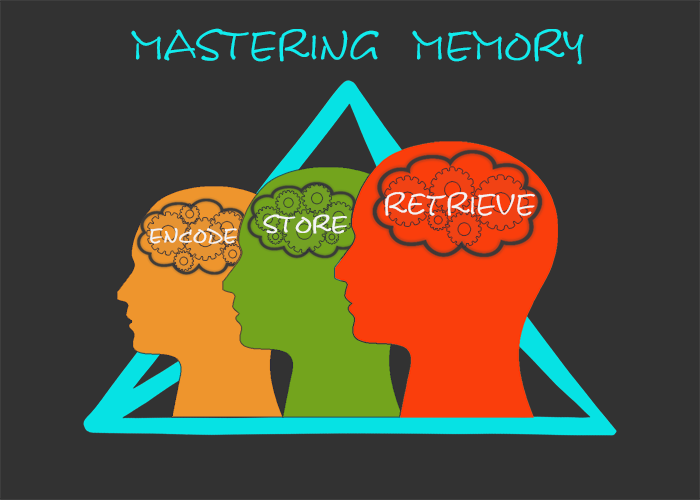
In today’s complex financial landscape, mastering your money is not merely an aspiration but a necessity for securing long-term stability and peace of mind. A budget, at its core, serves as a meticulous plan that helps you manage your money by illustrating how much enters and exits your accounts each month. It’s a fundamental tool designed to empower individuals to make informed decisions about their spending, pave the way for savings, and proactively address or reduce debt.
Far from being a restrictive measure, a successful budget acts as a roadmap to financial freedom, enabling you to allocate funds effectively while ensuring that crucial savings and debt reduction goals remain on track. It is a critical component for taking control of your finances, offering a clear picture of where every dollar goes and identifying areas ripe for optimization. This transparent overview fosters greater awareness, leading to smarter spending choices and, ultimately, a more secure financial future.
Before embarking on the journey of creating a personal budget, gathering key financial information is paramount. You’ll need your take-home pay, which is your monthly income after taxes, easily found on a pay stub. Next, list your fixed expenses, such as housing, utility payments, insurance premiums, and loan amounts—these are consistent monthly bills. Additionally, track your variable costs, which fluctuate each month and include categories like groceries, gas, dining out, and entertainment, using past transactions for accurate estimates. Finally, itemize all your debts, including interest, for a comprehensive overview that will make the budgeting process significantly smoother and more accurate.

1. **The 50/30/20 Rule**One of the most widely recognized and straightforward budgeting methods, the 50/30/20 rule, offers a foundational framework for managing your income. This strategic approach suggests that your after-tax income should be allocated into three primary categories: 50% for needs, 30% for wants, and 20% for savings and debt repayment. Needs encompass essential expenses like rent, bills, and groceries—the non-negotiables that keep your life running smoothly. This clear breakdown provides a broad guideline, making it an excellent starting point for those new to budgeting.
For example, if your monthly take-home pay is $3,000, the 50/30/20 budget would suggest allocating $1,500 for needs, $900 for wants, and $600 toward savings. This structure is designed to be a flexible ideal rather than a rigid command, allowing budgeters to adapt it to their unique financial situations while still promoting responsible spending and saving habits. It’s particularly well-suited for individuals seeking an easy, big-picture approach to financial management, offering ‘training wheels’ for beginners to gain confidence.
The beauty of the 50/30/20 rule lies in its simplicity and effectiveness for fostering financial discipline without overwhelming complexity. By clearly defining what constitutes a ‘need’ versus a ‘want,’ it encourages mindful spending while ensuring that a significant portion of income is consistently directed towards financial growth and security. This method is best for people who want an easy, big-picture approach and is one of the especially good budgeting strategies for beginners who just need training wheels.
Read more about: Fortify Your Finances: 15 Essential Items You Must Remove from Your Wallet to Prevent Identity Theft

2. **The 60/30/10 Budget**Recognizing that the 50/30/20 rule might not be universally feasible for everyone, especially those with lower incomes or high cost-of-living expenses, the 60/30/10 budget offers a more flexible alternative. This method reallocates percentages to provide more breathing room for essential expenses. Here, 60% of your income is dedicated to needs, 30% to wants, and 10% to savings and debt repayment, addressing scenarios where prioritizing essentials over aggressive savings targets is necessary.
This framework may work well for those with lower incomes, living in higher cost-of-living areas, or those who need to prioritize essentials over savings. While ideally budgeters would work up to contributing more than 10% to savings, that’s just not feasible for some. The 60/30/10 approach acknowledges these realities, offering structured spending guidance that is more attainable for certain financial situations.
Consider a monthly take-home pay of $3,000. Under the 60/30/10 budget, you would devote $1,800 to needs, $900 to wants, and $300 toward savings. This contrasts with the 50/30/20 breakdown, which would allocate $1,500 for needs, $900 for wants, and $600 for savings. The 60/30/10 budget thus provides a viable pathway for individuals to manage their finances effectively without feeling constrained by an unachievable savings goal, making it a pragmatic choice for many.
Read more about: Unlock Your Financial Potential: Expert-Vetted Budgeting Methods to Prevent Overspending and Build Lasting Wealth

3. **Zero-Based Budgeting**For those who prefer a highly detailed and intentional approach to money management, zero-based budgeting stands out as an exceptionally rigorous method. Unlike broader guidelines, this system demands that every single dollar in your budget is assigned a specific purpose until you effectively ‘end up with zero dollars.’ It’s about giving every bit of your paycheck a job, leaving no money unassigned and ensuring absolute clarity on where your funds are directed.
This method shines for people who overspend or are meticulous about tracking their cash flow, as it virtually eliminates the possibility of ‘mystery money’ slipping through the cracks. By forcing you to make a plan for every dollar—allocating specific amounts to housing, groceries, debt payments, savings, and even discretionary spending like entertainment or dining out—it fosters a deep understanding and conscious control over your finances. It is one of the best budgeting styles for people crushing debt, since it forces you to see where every cent goes.
For instance, if your monthly take-home pay is $3,000, a zero-based budget would have you plan for every cent. You would make a detailed plan for housing, groceries, debt payments, and savings. If, after covering essentials, you find $200 left unassigned, you would then intentionally give that money a purpose, perhaps by putting it toward entertainment or dining out. This level of specificity and control makes it best for control freaks and detail lovers, or anyone committed to aggressively tackling debt or maximizing every dollar’s potential.
Read more about: Buyer Beware: 8 Budgeting Traps That Can Derail Your Financial Future

4. **Cash Envelope Budget (Cash Stuffing)**The cash envelope system, often revitalized as ‘cash stuffing’ on social media, offers a highly tactile and effective method for controlling impulse spending. This system operates on a simple yet powerful premise: you allocate a set amount of physical cash to each item in your budget, such as groceries, gas, or takeout. You then create physical envelopes (or virtual ones through an app) for each category and fill them with the designated amount of cash.
The inherent discipline of this method becomes apparent when an envelope is empty—once the cash is gone, you cannot spend any more in that category until the next budgeting cycle. This physical limitation acts as a potent deterrent against overspending, as it makes it harder to simply swipe a card. The tangibility of cash holds you accountable in a way that credit cards, with their seemingly endless limits, often cannot, making overspending harder because the physical limit of cash holds you accountable.
To illustrate, if you designate $100 for dining out in your $3,000 monthly budget, and you’ve already spent $90 from that envelope, the visible $10 remaining clearly signals the need to reconsider dinner plans. This immediate visual and physical feedback loop empowers individuals, particularly impulse spenders, to develop greater control over their spending habits. It is best for overspenders who need discipline and clear limits, providing a robust, clear boundary for discretionary spending.

5. **Pay-Yourself-First Budget (Reverse Budgeting)**The pay-yourself-first budgeting system, also known as reverse budgeting, cleverly flips the traditional budgeting script. Instead of saving what’s left after expenses, this method prioritizes tucking away money for long-term goals—such as savings, investments, or retirement funds—at the very beginning of your pay cycle. Once these crucial allocations are made, the remainder of your money is then available for other priorities, including bills and leisure spending.
This approach fundamentally shifts savings from an afterthought to a primary financial commitment, making saving automatic instead of a task dependent on willpower. The beauty of this system is that you build wealth in the background without relying on constant conscious effort. It’s an ideal system for people who want to prioritize long-term goals without the meticulous accounting of every penny, offering a streamlined path to financial growth.
For example, with a monthly take-home pay of $3,000, the first action you take might be to stash $300 for your IRA and $100 for your emergency fund. Only after these vital contributions are secured would you proceed to budget the remaining funds as you wish, without the same meticulous tracking often required by zero-based or envelope systems. This method ensures your priorities get handled upfront, so whatever you spend afterward doesn’t come with guilt. It is best for people focused on building wealth or saving consistently, and for those who hate tracking every expense but still want results.” , “_words_section1”: “1654
Read more about: Guard Your Sale: 13 Common Scams Targeting Private Car Sellers and How to Spot Them

6. **Loud Budgeting**For individuals who thrive on external accountability and shared objectives, “loud budgeting” presents an innovative, socially-driven approach to financial discipline. This method involves openly declaring your financial goals and progress to a chosen network, be it friends, family, or even social media communities. The core idea is that making your monetary aspirations public cultivates a strong sense of commitment, significantly increasing the likelihood of sticking to your plan.
By sharing your budget, you transform what is often a private and challenging endeavor into a supported, communal effort. This transparency acts as a powerful motivator, as the awareness of others can inspire greater diligence and deter impulsive spending. It leverages the positive aspects of social pressure, turning it into a built-in accountability mechanism that can be more effective for some than solitary tracking.
Loud budgeting is particularly well-suited for those who are socially motivated and find that external recognition or the desire to meet communicated expectations helps them adhere to personal goals. If you are an individual who is more likely to follow through on commitments when they are known to others, this open and communicative budgeting strategy could provide the necessary impetus to achieve your financial targets.
Read more about: The AdTech Wreckage: Marin Software’s Wild Ride From Industry Pioneer to Bankruptcy Showdown

7. **Automated Budgeting**In today’s digitally advanced landscape, automated budgeting offers a streamlined, “set it and forget it” solution for managing personal finances with minimal daily effort. This method relies on technology, typically through dedicated budgeting applications or integrated banking features, to meticulously track expenses, categorize spending, and execute automated transfers into savings or investment accounts. This significantly diminishes the necessity for manual oversight, thereby fostering consistent financial discipline.
Platforms suchs as MoneyLion, Mint, or Rocket Money exemplify this approach by seamlessly syncing with a user’s financial accounts. These tools autonomously monitor where funds are allocated, offering clear insights into spending habits without demanding constant manual input. The inherent hands-off nature of automated budgeting effectively reduces “decision fatigue,” enabling users to cultivate wealth and manage debt discreetly in the background, making financial growth almost effortless.
Automated budgeting is an optimal choice for individuals who are tech-savvy and prefer efficient, reliable systems to manage their money. It is an empowering strategy for those prioritizing consistency and accuracy in their financial planning, as it largely removes human error and the temptation for impulse deviations. For many, this automated framework simplifies the adherence to a budget, making it a powerful tool for achieving long-term financial security.
Read more about: Navigating the Complexities of Finance: Essential Disciplines for Prudent Financial Management

8. **The Japanese Kakeibo Budgeting Method**Originating in Japan, the Kakeibo budgeting method is a distinctive, pen-and-paper system that emphasizes mindfulness and intentionality in financial management. Far beyond mere numerical tracking, Kakeibo instigates a crucial moment of reflection before each purchase by posing the question: “Do I really need this?” This deliberate pause serves as a powerful mechanism to interrupt impulsive spending patterns and foster conscious financial decisions.
The methodology involves physically documenting every transaction, meticulously setting monthly savings goals, and engaging in regular, retrospective analysis of one’s spending habits. This tangible engagement with your finances cultivates a deeper, more personal understanding of where your money truly goes. It transforms budgeting from a cold, analytical exercise into a thoughtful practice that uncovers habits and encourages deliberate choices, promoting a profound relationship with one’s financial resources.
Kakeibo is an excellent fit for individuals seeking a more introspective and deliberate approach to their money management. If you value mindfulness and find that the act of writing things down reinforces your commitments, this traditional yet profoundly effective method can provide unparalleled clarity and control over your financial life. It empowers users not just to track expenditures, but to genuinely comprehend the motivations and impacts behind their spending.
Read more about: Buyer Beware: 8 Budgeting Traps That Can Derail Your Financial Future

9. **The 80/20 Budget (also known as the Pareto Principle)**For those who find the intricate details of highly segmented budgeting systems overwhelming, the 80/20 budget offers a remarkably straightforward and liberating framework. Drawing inspiration from the Pareto principle, its core tenet is elegantly simple: save 20% of your net income, and freely spend the remaining 80%. This method empowers individuals with substantial financial flexibility while simultaneously embedding a consistent, foundational layer of savings.
This approach is frequently lauded as the “low-effort meal prep” of financial planning due to its emphasis on simplicity over exhaustive categorization. By committing a fixed percentage of income to savings right from the outset, individuals ensure continuous progress toward their financial objectives without the necessity of meticulous expense tracking across numerous categories. It provides a robust safety net, allowing the majority of income to be managed with fewer restrictions.
The 80/20 budget is particularly well-suited for minimalists and individuals who prefer not to immerse themselves in granular financial tracking. If your objective is to guarantee consistent savings without the burdensome oversight of every single transaction, and you trust your ability to manage the bulk of your spending judiciously, this uncomplicated and empowering method could seamlessly integrate into your financial lifestyle, promoting both security and freedom.
Read more about: Unlock Your Financial Potential: A Practical Guide to 10 Budgeting Methods That Will Transform Your Money Habits

10. **Bi-Weekly Budgeting**Recognizing that traditional monthly budgeting cycles often misalign with real-world pay schedules, especially for those compensated every two weeks, bi-weekly budgeting offers a highly practical and responsive solution. This method advocates for creating a financial plan that directly corresponds to your bi-weekly paycheck cycle, effectively generating two distinct budgets within each calendar month. This alignment significantly smooths out cash flow, alleviating the common mid-month financial pressures.
This synchronized approach greatly simplifies the management of regular expenditures such as rent, utility bills, and other recurring commitments. By allocating funds for these crucial payments as income becomes available, it ensures prompt coverage and substantially reduces the risk of unexpected shortfalls before the subsequent paycheck arrives. Matching your budgeting efforts to your actual pay cycle provides a more accurate and immediate reflection of your financial position, enhancing clarity and control.
Bi-weekly budgeting is an especially advantageous strategy for salaried employees who receive paychecks every two weeks, or for anyone whose income stream is consistent on a bi-weekly basis. It is an effective method for achieving smoother cash flow management and a more granular understanding of financial movements throughout the month, thereby minimizing the scramble and uncertainty that can accompany a purely monthly budgeting framework.
—
### Choosing Your Financial GPS: Finding the Right Budgeting Method
Navigating the diverse landscape of budgeting methods to find the optimal fit is crucial for achieving lasting financial peace of mind. The most effective budget isn’t a one-size-fits-all solution, but rather the one you are genuinely committed to and can consistently apply. This vital selection process requires an honest assessment of your unique financial circumstances and personal preferences, allowing you to craft a strategy that truly empowers your financial journey.
When selecting a budgeting method, begin by considering the predictability of your income and your typical spending habits. If your earnings are stable and consistent, like a fixed salary, methods such as the 50/30/20 rule or zero-based budgeting can offer a clear, structured framework for precise planning. However, for those with fluctuating income from freelance work or if you frequently overspend, adaptable strategies like Pay-Yourself-First or the Cash Envelope system are more beneficial, providing built-in guardrails and ensuring essential savings are secured as funds become available, creating a buffer against unpredictability.
Next, factor in your desired time commitment and primary financial goals. If you prefer a quick, low-effort approach, the 50/30/20 rule or Pay-Yourself-First streamline the process without demanding constant attention. Conversely, if you enjoy delving into details and gaining granular insight into your cash flow, methods like zero-based budgeting or the Japanese Kakeibo method can provide that deeper level of control. If eliminating debt is paramount, focused strategies like zero-based budgeting are key. For building substantial savings, Pay-Yourself-First or the 50/30/20 rule excel by prioritizing automated savings upfront.
Finally, consider your preferred style of engagement with finances. Tech-savvy individuals might find automated tools and budgeting apps highly efficient and convenient, complementing methods like automated budgeting. For those who prefer a more tactile, hands-on experience, the physical act of managing cash with the envelope method or the reflective practice of the traditional Japanese Kakeibo method can make the budgeting process feel more intentional and personally engaging. The key is to select a style that resonates with you, ensuring you remain engaged and consistent.
### Achieving Lasting Financial Peace of Mind
Ultimately, the path to enduring financial peace of mind is less about discovering a single, perfect budgeting template and more about finding and committing to a system that truly resonates with your individual circumstances. While there are numerous effective budgeting strategies available, the most impactful one is unequivocally the budget you will consistently implement. It is not only acceptable but highly recommended to experiment with various approaches, making adjustments as needed until you uncover the method that genuinely “clicks” with your personal rhythm and financial reality. This adaptive process of refining your strategy is the true cornerstone of successful budgeting.
Read more about: Decoding the $300 Rule: Practical Steps to Finance Your Car Without Financial Strain
Budgeting, at its heart, is about maximizing the potential of every dollar you earn, transforming abstract figures into concrete steps towards your personal aspirations. Whether your goal is to systematically reduce debt, establish a robust emergency fund, save diligently for a significant purchase, or secure a comfortable retirement, your chosen budget serves as the indispensable blueprint. By actively engaging with your finances, cultivating a keen awareness of your spending patterns, and consciously directing your resources, you empower yourself to navigate the complexities of modern financial life with unwavering confidence. Embrace this journey, and you will not only witness your financial landscape evolve but also achieve a profound and lasting sense of control and inner calm.



.jpg)
